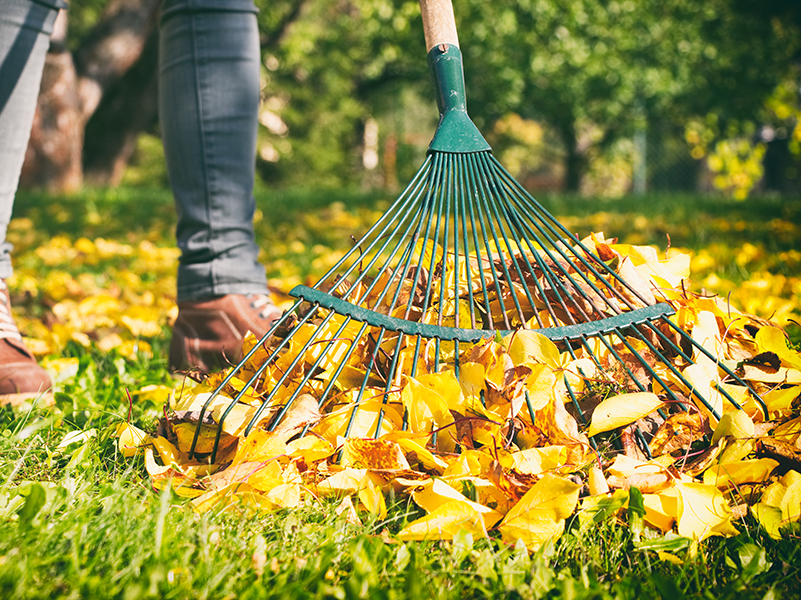Autumn’s here – take a leaf out of this book

Autumn is officially autumning, so we’ve asked our fantastic Environmental Services Manager Rich what to do about the leaf invasion currently coming down – literally – on our heads.
Autumn is a time of outstanding beauty, when the natural world treats us to a last burst of colour before the onset of winter.
For just a few weeks the green leaves of deciduous trees and shrubs change colour to many shades of russet, red, golden, yellow, purple, black, orange, pink and brown.
The depth of colour is influenced by the blend of chemical processes and weather conditions.
The benefit of shedding leaves is that trees can preserve the moisture in their branches and trunk, instead of drying out and dying. Also, a tree without leaves is in a state of dormancy and needs less energy to remain alive.
Leaf it to us
As part of our grounds maintenance, the Environmental Services Team removes fallen leaves from communal footpaths, car parks and any hardstanding (surfaces which aren’t grass or soil, such as tarmac, paving and concrete) which we are responsible for around our properties.
Leaves on grassed areas will either be raked off during planned visits or left to degrade naturally, which is great for the vitality of the turf.
Your responsibilities
If you’re an Onward customer, the garden brings your time to shine. Get in on the autumn action and remember to rake up your leaves as part of your responsibility to keep your green space in a generally good state.
It’s a much nicer living environment for you, and if you wanted to use this as an opportunity to take your green fingers to the next level, you can use these old leaves to make leaf mould, which produces an invaluable soil conditioner.
About leaf mould
Most leaves can be turned into leaf mould, but some take longer to compost than others.
Oak, alder and hornbeam will soon rot down, while sycamore, beech, horse chestnut and sweet chestnut take a little longer. Leaves from conifers and evergreen plants will take between two and three years to compost and are best added in small quantities only, shredding them first to help speed up composting.
If you only have a small garden you can save them in bin liners, but if you have the space – and a lot of leaves to collect – try building a leaf bin. It’s a simple cage-like structure that shouldn’t take any longer than 30 minutes to put together.
How to make your own leaf bag
- Take a black bin liner and punch a few holes in the side and bottom
- Rake up leaves weekly and stash them in the bag
- When almost full, sprinkle with water, shake and tie
- Store in a shady spot and the following autumn the leaves will have rotted down into a rich, crumbly mixture that can be used as a mulch around the base of plants
- Let the leaves rot down for another year if you want to use it as a soil conditioner
There you have it – enjoy the splendour of this wonderful transition of the seasons.
To find out more about the team or chat about an issue get in touch


